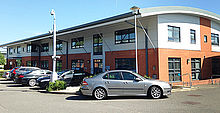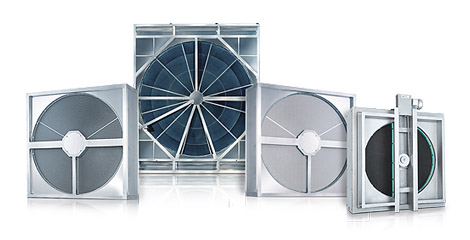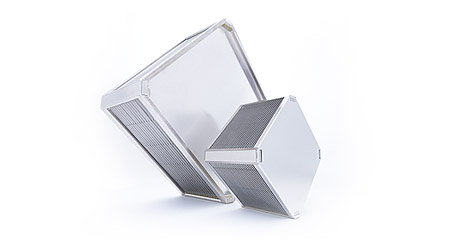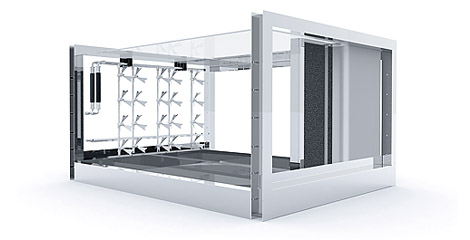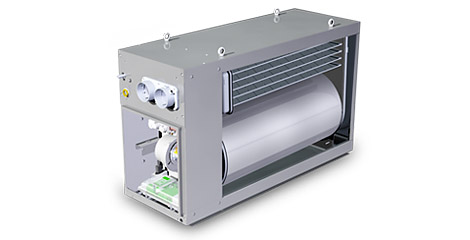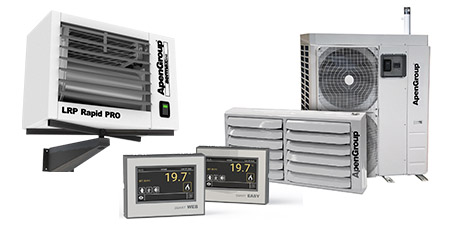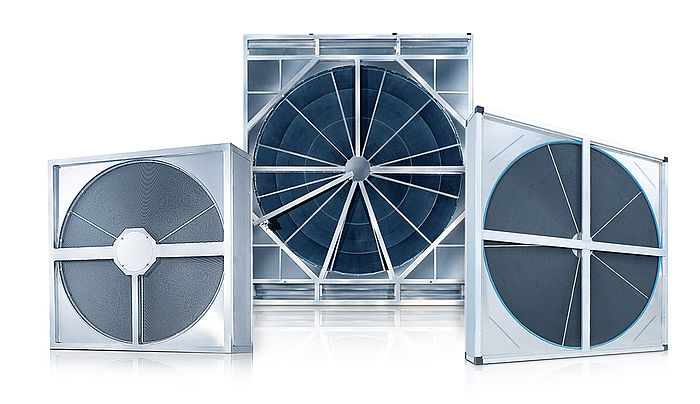Large Airflows - High Efficiency
Rotary heat exchangers are the most effective means of transferring heat. No other device can recover as much heat or cold. and no other heat exchanger can handle such large air volumes. Energy savings of up to 85% can be achieved.
Construction of the Heat Wheel
Rotary heat exchangers have a wheel-like construction. which is why they are also known as heat wheels or simply rotors. Made of aluminium foils, the wheels feature countless small channels through which the air flows and transfers its heat to this storage mass. Aluminium is ideal for this process because of its high thermal conductivity.

The storage mass of a rotary heat exchanger. The aluminium foil is between 0,07 and 0,1 mm thick while the waves can be between 1.4 and 2.5 millimetres high. The thickness and height of the wave shapes used varies depending on the dust and contamination level present in the air that flows through them.
Smaller waves allow a larger exchange area and thus higher efficiency, but simultaneously result in a greater loss of pressure in the airflow.
How the Storage Mass Works
The heat wheel rotates between two air currents: that of the supply air, which brings external air inside the building and the exhaust air, which carries ‘used’ indoor air outside. The air from outside flows through half the storage mass, while the exhaust air traverses the other half. In this process, the majority of the exhaust air heat is transmitted to the storage mass.This warmed half of the wheel continues to rotate until it is in the path of the cooler supply air, to which it transmits its heat. Consequently, the supply air enters the building at a significantly higher temperature.
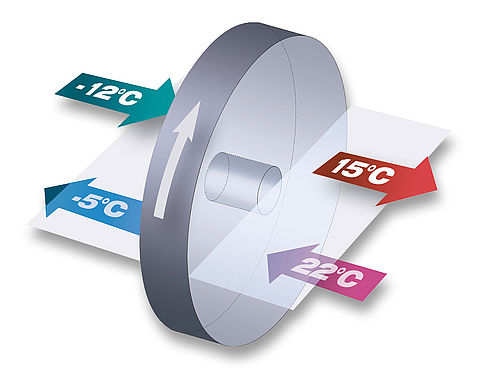
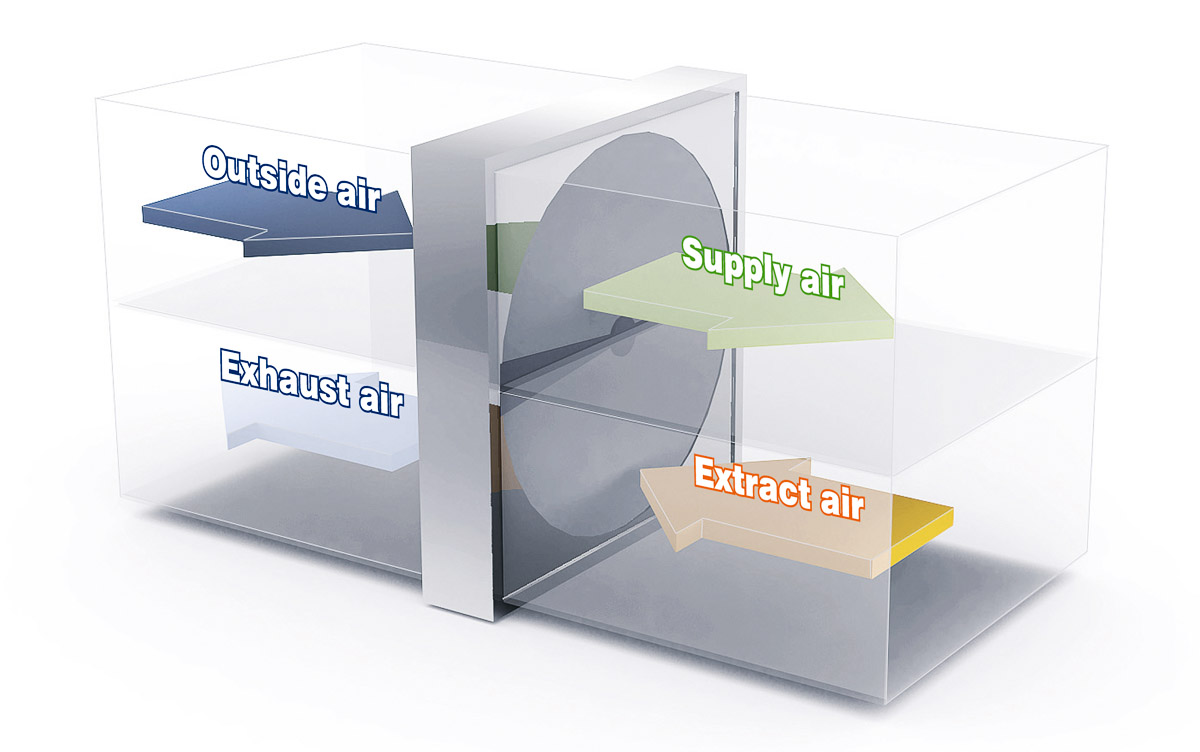
In the ‘winter’ scenario (where it is cooler outside than inside), the fresh air entering is constantly warmed by the rotary heat exchanger. In the opposite direction, the warm exhaust air from the room transmits its heat to the storage mass.
In summer, when the system is acting as a cooler, the principle operates in reverse. now the exhaust air is cooler than the incoming air. The rotor stores the coolness of the exhaust air and so cools the warm air entering from outside.
Regenerative Heat Recovery System
Rotary heat exchangers are an example of regenerative energy recovery systems. They are used for ventilation and air-conditioning (e.g. for residential buildings, offices, manufacturing facilities, cruise ships) and also in process air systems - namely, wherever it is possible and appropriate to recover heat energy, for example in waste incineration facilities and in food, pharmaceuticals, paper and ceramics industries. The possibilities are practically endless.
Depending on their design and on the coating of the storage mass, however, rotary heat exchangers can also be used for space drying and humidifying and to transfer sensible and latent heat.
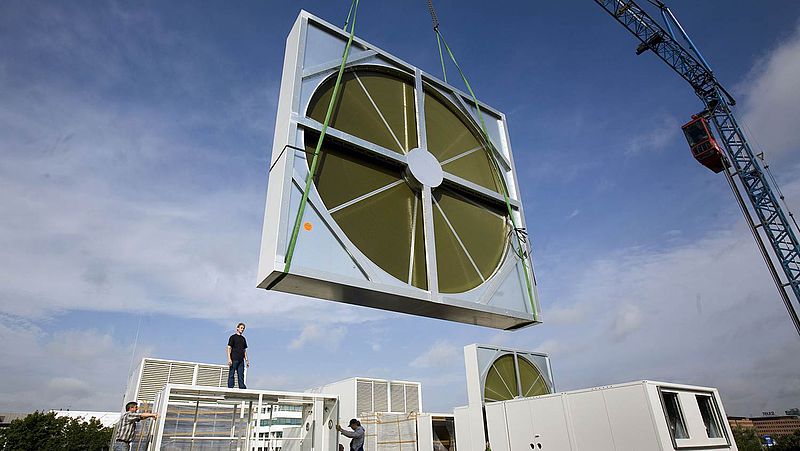
A large wheel being installed in a ventilation and extraction system. The rotor will transfer the heat energy in the outgoing air to the incoming air. Energy savings of up to 85% can be achieved.
Purge Chambers Prevent Mixing of Airflows
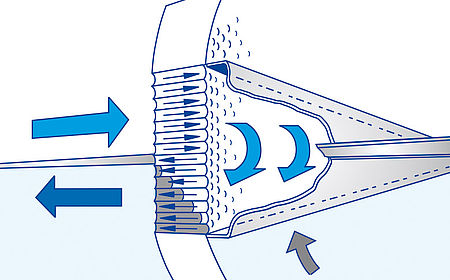
To prevent the exhaust and supply air becoming mixed in the rotor, a so-called purge chamber is used. In this extra chamber, some of the air from outside is channelled to the exhaust air side to create a rinsing effect. This also helps prevent some of the exhaust air travelling with the wheel to the incoming air stream.
The chamber is only effective, however, if the correct pressure potential is present and the correct fan configuration is used. Most rotors operate without purge chambers since a small mixing of exhaust air into the supply air is permissible.
More detailed information on purge chamber:

